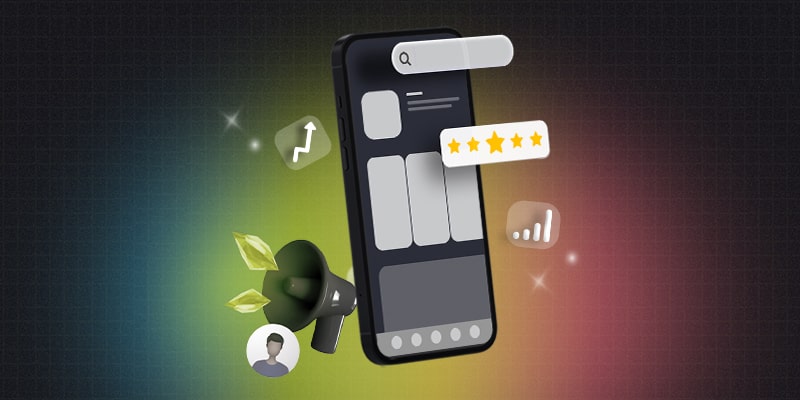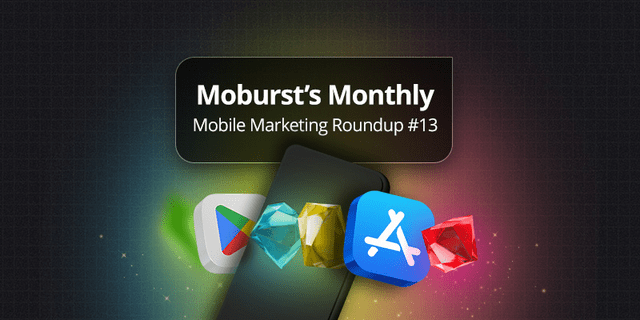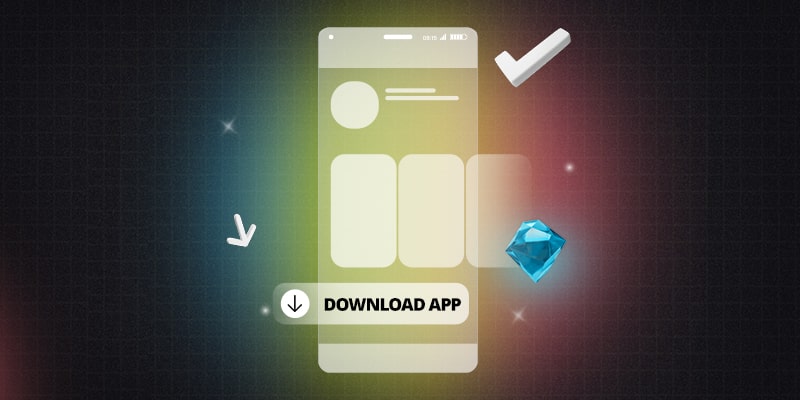
So, you are interested in app development and want to learn how to create a mobile app?
Mobile is the go-to platform for consumers right now, with over 60% of all internet traffic coming from a mobile device.
The growth and market penetration of mobile devices are so big that even Google changed entirely because of it. Since July 2019, google only checks the mobile version of websites when deciding what to show users.
The change is called mobile-first indexing.
With this increased growth and with over 1.5 billion smartphones sold every year, the app industry is one of the hottest niches to enter.
This is the reason we decided to write this piece of amazing content (wink wink) and teach you everything you need to know about how to build an app, launch it and profit.
What is App Development?
App development is the process of creating software that runs installed on operating systems installed on mobile devices.
Compared to standard software run on computers, mobile apps are usually developed with special features in mind. App developers can use a mobile phone’s data and characteristics to create new app functionalities.
A mobile game may use an iPhone’s accelerometer, a remote control app may use infrared and a running app may use the GPS and the pedometer.
Right now, app development is one of the most interesting niches for corporations in order to come closer to their customers or improve their workflows.
App development is also one of the most well-paid careers right now.
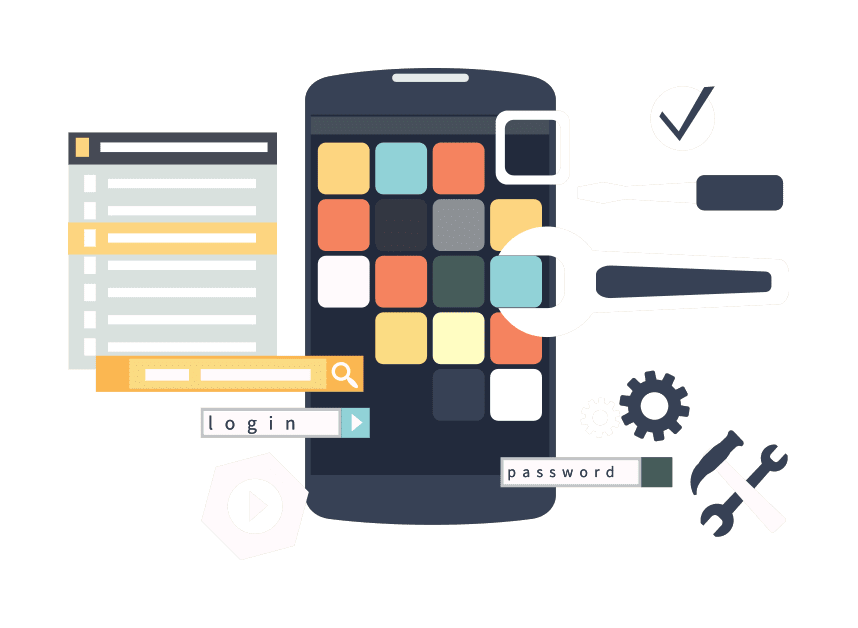
How much does an app cost?
Well, this is a tricky part. A mobile app can cost $0 or $500.000, depending on who is building the app or what features it has.
Most people that are searching for how to build an app have a great idea, yet, not much of a budget. The only solutions they have are:
- Building an app by themselves
- Get an investment
- Use app builders to reduce the cost
Our ASO experts and Marketing specialists are here to help you achieve success.
Yet, if you’re an established company looking to broaden your reach towards customers and have the budget to make a calculated investment, you need to know how much should you pay.
First thing first, you need to decide on who you’ll work with. Depending on the geographical positioning, you will pay anywhere from $10/hour to $200/hour.
What are the average hourly prices for app development?
The following are average hourly rates based on location.
- North America – $150
- Western Europe- $70
- South America – $40
- Eastern Europe – $35
- India – $25
- Indonesia – $ 18
If you’re looking at the above list and want to rush for Indonesia or India, make sure to take everything into consideration.
There are some amazing Indian or Indonesian companies that can create outstanding results and some American or European companies can create not so great apps.
Yet, you face the following risk when deciding to pay low prices:
- Hard to communicate
- Cultural differences
- Different time zones
- Possible IP theft
A small and simple app may start from $10.000 while an enterprise app combined with a database and a web app may easily go over $500.000.
Just for reference, a payment system may take anywhere from 50 to 100 hours, while a login integration through social media + email will take around 50 hours.
You will also need to pay for anywhere from 50 to 200 hours of app design, UX design and wireframing.
Mobile games are the most expensive apps on the market.
I still remember when I worked at a small mobile gaming studio. The costs were extreme.
You needed to pay for software, devs, game designers, graphic designers, audio and video files.
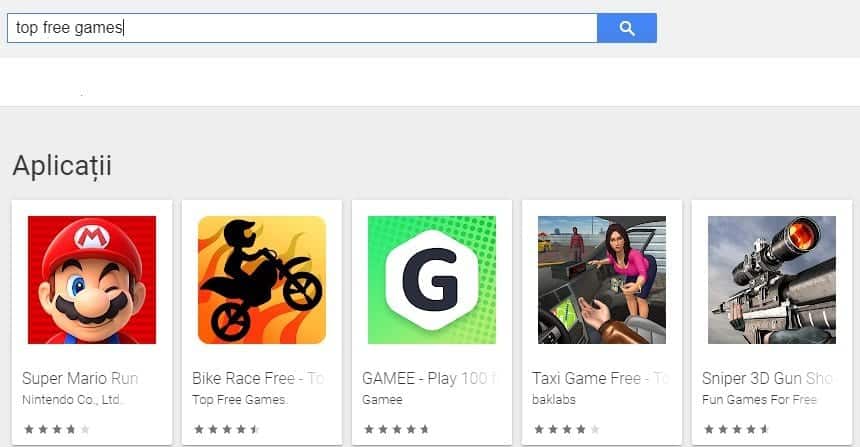
Many times, if you didn’t have an immense budget to create the mobile game, aggressively promote it and keep it alive for a couple of months, you shouldn’t have started.
Even a simple hill climb racing game like one of the games we designed (a simple mock-up game that was meant to be the first project and bond the team) had a cost of around $50.000.
Types of apps
Depending on the platform and necessities, there are tons of types of apps. You can go for a full mobile application, native apps or even hybrids.
Not to mention that you need to make sure it runs of multiple operating systems.
- Native apps:
- iOS on Objective-C or Swift
- Android on Java
- Windows Phone on Net
- Web Apps
- Hybrid mobile applications created on:
- Xamarin,
- React Native,
- Ionic,
- Angular Mobile
- Sencha Touch
Native apps are apps that have been created directly for a specific OS. because of this, they run faster on their respective OS and phone.
Web apps are not really apps, but more like responsive websites that work great on mobile phones. They are fast and look great, yet, again the only thing you’ll install on the phone is an icon that will open the website without a browser bar.
The problem with Web Apps is that they won’t work without an internet connection.
Hybrid mobile applications are created on platforms that work great on all standard mobile operating systems. Meaning that you can create an app in Xamarin and React Native and it will work on iOS & Android phones.
Decide on your app idea
It’s best to decide on one main idea that branches into multiple features. Most of the time, you will be pressured by tight deadlines and small budgets to launch the app with only a couple of main features and add more features in time.
Meaning that your app needs to be relevant with only a couple of main features.
Deciding on one main idea and benefit will also allow you to better research the market and convince investors, as they are not interested in pushing their money into an app that is too broad and hard to market or maintain.
Think about app monetization
Will you sell the app, get money through ads or add subscription or premium features?
If you’re not thinking about revenue models or how the app will benefit your company, your app is doomed to fail.
Many businesses are entirely revolving around the app they have created. See Toggl for example, a time tracking software that has both a web version and a hybrid application.
It does one thing great, it tracks time and allows you to attribute that time to various tasks or project.

Our ASO experts and Marketing specialists are here to help you achieve success.
They get their revenue by selling extra features that are useful to businesses.
A mobile game could be entirely free and earn revenue through ads only.
In the case of a mobile game, if monetization hasn’t been integrated and creates as part of the main experience, it will fail. You don’t want to make people feel ripped off or to think that you are making the game hard just to take their money for powerups.
There are also apps that are the main tool of business. For example, food delivery apps. They are making money by selling food. You can easily sell food without an app, yet, the app will allow for a simpler process.
Do some market research
If you want to make an app, you need to know who will use it. And sometimes, more importantly, if there are people that will use it.
There is no point in creating an app that no one will use.
The best ways to research the market and validate your idea are:
- Qualitative research
- Quantitative research
- Keyword research
- Competitor research
Do interviews and ask people that could be your main users what they need. Learn about their necessities and tweak your app idea around them. The more you solve their problem, the higher the chance they will buy.
You can also create surveys and find out relevant statistics for your business.
- How many people need a service your app will provide?
- How much are they willing to spend?
- They’d like a freemium or a paid app?
- Subscription or onetime high payment?
Use that info and improve your strategy.
In terms of keyword research, you can use ASO tools and find out what people are searching on the app store. By doing that, you’ll be determining the download potential of your app and with standard conversion rates, make an estimate of future revenue.
As for Competitor Research, find out what works well for them and more importantly, what doesn’t!
Read their reviews, play with their app, test things out. You are sure to find out relevant info.
How to create a mobile app feature list
It all depends on what is most important.
Don’t think that everything is important. You don’t need video calls instantly in your app and there is no need to allow users to use the GPS in order to check what their cat does on a dating app.
Every feature you add may increase your costs with as low as $10.000.

Because of this, we recommend that you start creating a system where you split the features into:
- Mandatory for launch
- Must have in the future
- Nice to have
By doing this, you’ll find that out that your app only needs a couple of features to launch and you can build from there as you have new revenue sources from clients and new potential investments after you launch your app.
Pro tip: Learn a little about app internationalization, a process in which no content is hardcoded in the app, allowing for easy app localization in the future. By doing this, you’ll be able to easily translate the app and push it into foreign markets.
Validate the idea through an MVP
An MPV (minimum viable product) is sometimes really easy and fast to create. Also, many investors won’t even talk with you if you don’t have one.
To be more precise, a minimum viable product can be a beta version of your app that has been used and approved by consumers.
One example that we can give is Vetted.ro, a small Romanian startup that wants to be the first online vendor in Romania to sell verified second-hand electronics, mostly smartphones.
They needed investments in order to start working on the main product and they would have only received it if the idea was viable.
They created a WordPress Ecommerce in less than 1 day and started selling products that they found online.
After 1 month the product was validated and they got 120.000 euros in investments for the first round, with 500.000 euros projected
Design an app wireframe
A wireframe is the main sketch, blueprint or schematic of an app that serves as a visual guide for both app developers and designers.
It first appeared in web design and later got introduced in app development.
Our ASO experts and Marketing specialists are here to help you achieve success.
The app wireframe is in no way a design file. It doesn’t show what colors you will use or how big the buttons will be.
Instead, it will show what type of content will exist on each panel of an app and what happens when a user interacts with an element.
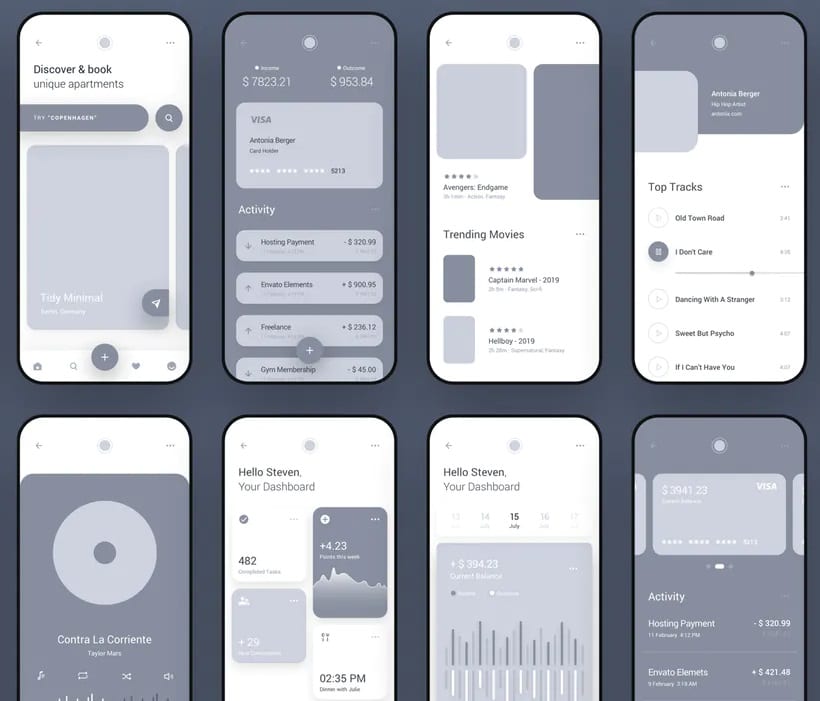
Example:
Press Sign in -> Popup with Google login appears -> Login confirmer -> redirect to Profile -> click on add photo -> opens media files.
Usually, this starts out sketched on paper and is later digitalized for easier editing and correlations between the panels.
Envato has some amazing wireframe templates that you can use. You just need a premium template and you can start downloading whatever you want.
List of free wireframe tools:
- Pencil Project
- MockPlus
- iDoc
- Wireframe CC
- Google Drawings
List of Paid wireframe tools:
- Adobe XD
- Fluid UI
- Balsamiq Mockups
- Hot Glo
Learn the basics about mobile app user experience
“All design decisions should be based on the needs and wants of the users. “
Don Norman
User Experience (UX) is the basis of human interaction with your app. All of their perceptions and emotions while using your product.
While you cannot really understand everything a user will feel when using your product, you can always make decisions on what the masses need.
- If the app isn’t simple enough, people will leave.
- If the app is slow, people will leave.
- If people can’t use it while it’s dark outside because the letters cannot be read while the screen lights are low, people will leave.
- If it’s hard to navigate between the panels or the commands are not intuitive, people will leave.
It’s just that easy. Yet, exactly that complicated.
There are tons of studies that you can read and use for research. You can also imitate how other apps feel in order to provide a suitable product for your users.
Just remember. Make things as easy to use for your users as possible. This is why so many people flock to iOS software in the first place.
It’s easy to use and it works.
Create an app graphic mockup and design
After you’ve decided on how the app will behave, it’s time to work on the design.
This is the step that usually takes a big chunk of your budget. As you’ll have many hours of research, execution, feedback and many exchanges between you (the client) and the graphics team.
Yet, your visual input is crucial when presenting the app to the users.
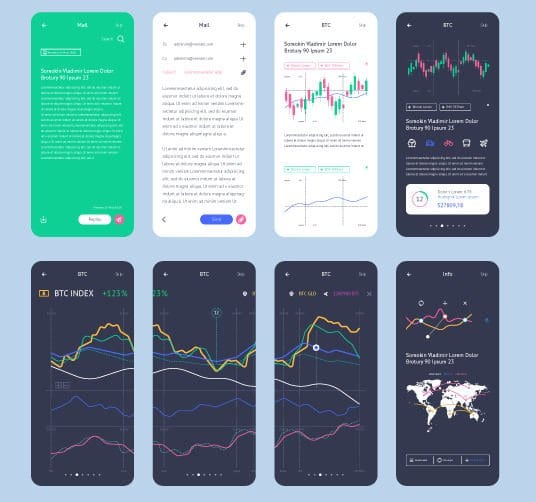
The graphics are so important that they will directly affect:
- User retention rate
- The number of app downloads
- App ranking
- Marketing ROI
For retention rate, it’s pretty obvious. If people don’t like your app, they will uninstall it. By making sure that your app is as visually appealing as possible, you are reducing the chances of losing users and wasting marketing budgets.
Graphics will also affect your app downloads, as app store screenshots are one of the main decision factors behind a user’s intent to download and install your app.
Also, based on how many people download your app (or not), app stores will rank you.
If people are deterred by your graphics, you’ll have a hard time getting people to install, resulting in increased CPI (cost per install) and a plummeting ROI.
How to develop an app?
After deciding what your app will do, validating the idea and making sure you got your design in place, it’s time to start coding and developing your app.
The developing process is usually the longest one. So you need to be patient and make sure that you are working close to your dev team in order to create something that will bring value to your users.
When developing a new app, you have 2 simple directions, that will eventually branch out:
- Hire a mobile app development company
- Do it yourself (DIY)
We offer mobile app development services. Our specialists are here to help you achieve success.
Let’s talk a little more about both.
Hire mobile app development companies?
First thing first, you need to have the money to hire. There are multiple payments options that you can use:
- Project-based fee
- Hourly fee
- One of the above + Equity
In terms of project-based fees for an app, it’s extremely simple. You point out the feature list, clearly define what your app can and cannot do and receive a price.
Once the contract is signed, what is on the contract is what you’ll receive, no more, no less.
Project-base works great when you’re looking to build something simple. Maybe an app for an event or something simple that you’ll be using inhouse.
Hourly fees are a little more dynamic. You still negotiate how much the entire project will cost. Yet, your mobile app development company will split the costs into hours and tell you what you’re paying for.
This is really useful when your business is evolving.
If you have a list of features that you cannot afford right now, yet, there are high chances an investment will come in somewhere around the development process, it’s best to go with an hourly rate. As you’ll be easily able to make a switch and add the new features into the mix.
The last option is a combination between one of the first options and equity. There aren’t many companies that will accept equity. Yet, if you do strike a deal in equity it will significantly reduce your startup costs in the first year or two.
Should I go for inhouse or externalized?
If you have the budget, you can choose to either hire a company or employ a team. Yet, employing a team is usually a viable option only if your planning to use the app as the main pillar of your business.
For companies like Tinder or Calm, it makes sense to have the developers inhouse. The entire company revolves around the app. Inhouse devs are cheaper and are more reliable.
Learn how to build a mobile app by yourself?
If you’re a beginner and have the best app idea, but no skill on how to build an app, you may beed to start learning.
Mobile app development isn’t easy and, most of the times, if your idea is really high tech, you may not be able to learn to do everything by yourself.
Yet, if you’re able to do at least the MVP or beta version by yourself, you’re skyrocketing your chances of getting an investment.
Learn to code
When deciding how or what to learn, there are endless possibilities. Most app developers are self-taught anyway. You can start with video tutorials then advance on react native courses or building Xcode or Swift apps.
Video Tutorials
In the age of the internet and video content, you may be surprised how many video tutorials you can find.
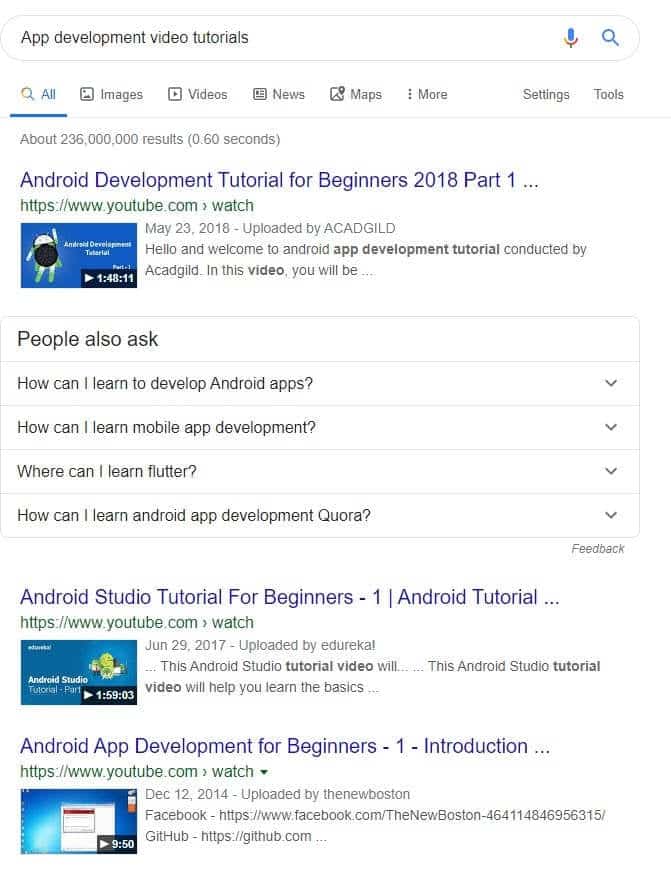
While we don’t officialy endorse any particular video tutorials for app building or coding, a quick Google search can be your best friend.
We’ve found over 236.000.000 results on Google.
Start by watching a couple and see if you can understand the concepts. Then, start building. You can use free code editors that can be downloaded.
Most of them are open source.
React native courses
React Native is a mobile development framework created by no other than Facebook. It works on both Android and iOS as well as for creating websites.
Our ASO experts and Marketing specialists are here to help you achieve success.
It’s an amazing tool that can help you create your much-desired app.
Yet, React is really advanced and most of the times you may need to follow a course in order to understand it.
Xcode or Swift apps
Swift is a programming language developed by Apple for its own iOS platform. It is written in Xcode, a tool that can understand both Swift and Objective C
Just take into consideration that by building apps in Xcode, you’ll only be launching your app on the iOS store
App creators and app builders
For really simple apps, you can always use app creators and app builders.
App builders work by using predefined lines of codes, features and databases that were built in such a way that they can easily work together through a drag and drop system.
A list of app builders is:
- Appy Pie
- Shoutem
- Swiftic
- GoodBarber
- BuildFire
- Mobincube
- AppInstitute
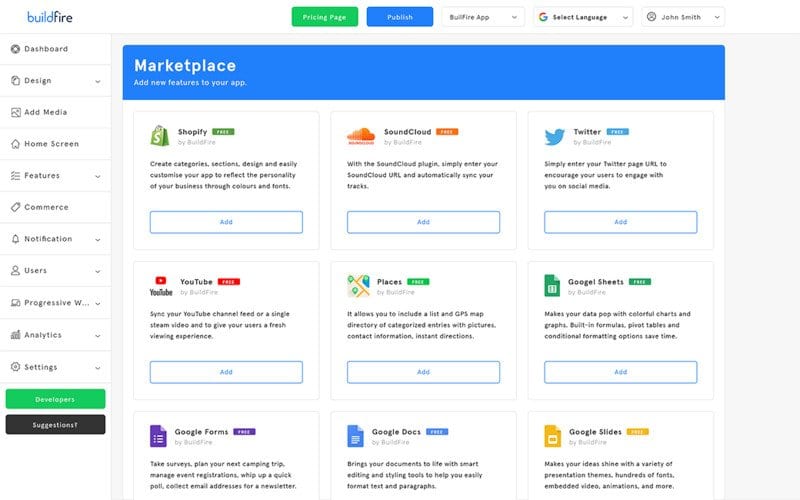
Build Fire is an amazing App Maker tool. As clearly presented in the image above, you can add functionalities to your app with a click of a button. Including stuff like Shopify or app analytics.
Test your app
Before launching anything, make sure that you test your app to the fullest.
Test it on multiple devices and on multiple resolutions. If it’s an app that works on both iOS and Android, test it on multiple OS versions as well.
Of course, you may not own 20 phones in your office.
The solution to this is installing an emulator on your laptop or pc and test your app on multiple digitally emulated phones.
Not testing your mobile app will make you lose users because of errors and revenue.
Launch an app on the App Store
You’ve created an amazing app from an even more amazing idea. You’ve tested the app and eliminated most of the bugs.
Now, it’s time to launch the app. Yet, let’s make sure you’ve also taken into consideration your marketing and content.
It’s no use in launching an app that no one knows about.
Create all the needed images, content and app screenshots
The app store needs more than an app. It needs a name, a logo, pictures, and content that showcases the app and its features.
See the Calm app bellow. (one of our clients)
Calm integrated a series of app screenshots inside their content in order to showcase how the app looks and functions. By doing this, they are increasing their chances of convincing users to download and use the app, resulting in a higher increased conversion rate.
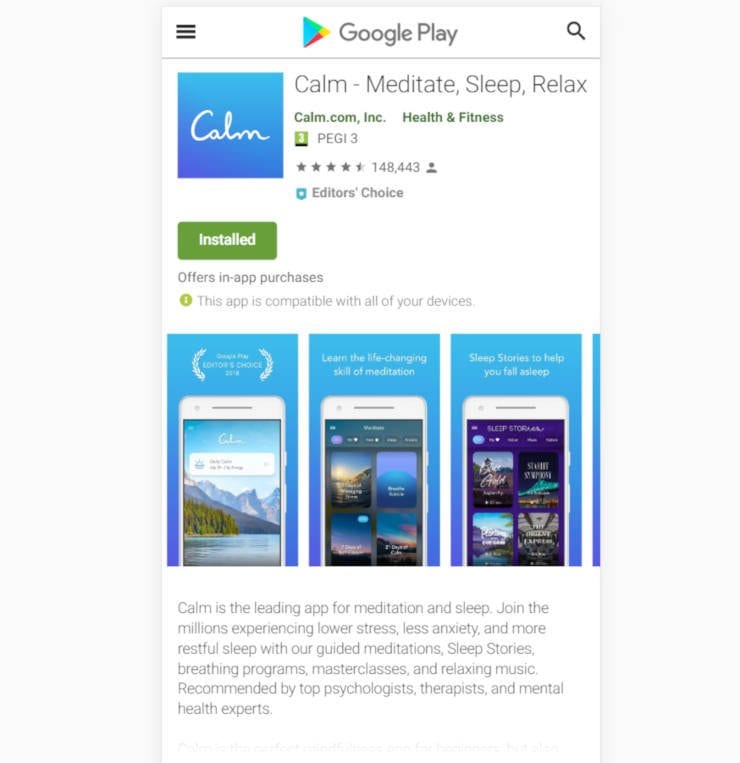
We have an entire article about how to optimize your app store screenshots. Feel free to check it out, a couple of thousands of words of awesome.
Remember to optimize your app
App store optimization is the process of improving your app’s content, images, and marketing campaigns in order to increase your ranking on relevant keywords in the app store search and increase the number of organic downloads.
App store optimization services are the main bread maker at Moburst and we pride ourselves as being one of the top ASO agencies in the world.
Our ASO experts and Marketing specialists are here to help you achieve success.
Before creating your content, decide on what type of app store keywords you’ll be approaching. This is the most crucial aspect of the app launch.
Getting indexed on a keyword with only 50 searches per month will leave your stuck in-app store limbo.
After deciding on what keywords you’ll tackle, you need to integrate it inside your:
- Title
- Url
- Developer name
- Short Description
- Description
Of course, there are tons of factors that affect your ranking, besides the content.
Pro tip: The number of installs you get in the first 48 hours is crucial to your app store ranking.
Build your app landing page
If you’re going to present your app on Social media or through ads, you need a landing page.
The landing page will showcase a presentational video, the benefits of your app and guide the users to the relevant app store.
They also serve as information beacons that can guide users to FAQ pages, pricing pages or any other relevant information regarding your app.
You don’t need anything to complicated here. Compared to the creation of your app, a landing page is a walk in the park.
You can create it entirely from code or use WordPress and a Template builder in order to create the landing page.
Pro tip: Make sure to detect the os of your users and only show the relevant app store for them to download from.
Prepare your marketing campaign
Make sure you got everything ready for your marketing campaign. The creative is done, the ads have been properly integrated and that your landing page is fast and working properly.
Some things that you can check before launching are:
- All budgets have been properly integrated (you don’t want to overspend)
- Ads are divided by OS.
- All of the links are working properly. (you don’t want to send people to an empty page or broken link)
- You have set multiple ad variants for A/B testing.
- Someone is ready to start answering reviews and messages.
Another great thing to take into consideration if you have the budget is a burst campaign. A burst campaign is a process of aggressive media buying meant to rapidly increase your downloads and push your ranking in the app store.
Publish your app
If you’ve followed every step in this app development guide and added all the info and content inside the app store, you are ready to publish.
Just one button and you are live.
Take note of user feedback and improve your app
Your app store review section is a gold mine for your company. Users will state what they loved about your app and most importantly, what they hated.
You can’t make everyone happy, yet, you can increase the percentage of happy users by constantly tweaking and updating your app.
Pro tip: If you decided to integrate a feature after reading about it in reviews, make a list of the users that requested it. After the update, answer those reviews and tell the user that because of him, the app got a new feature and thank him for his input.
App development FAQ
Apps usually go from $50.000 and up depending on the features. Simpler app or the ones created through app builder can be less expensive, between $10.000 and $50.000.
Some of the best app builders are:
Appy Pie
Shoutem
Swiftic
GoodBarber
BuildFire
Mobincube
AppInstitute
App development can take anywhere from 1 month for really simple apps, to 5 months for business oriented apps and 1 year for corporate and complicated apps.
Free apps are monetized through in-app ads, premium paid features or in-app purchases.
North America – $150
Western Europe- $70
South America – $40
Eastern Europe – $35
India – $25
Indonesia – $ 18
Conclusion
Creating an app is not rocket science. Yes, the process requires skill and competence. Yet, today, even small businesses can create an app for their business in order to tap in the mobile niches.
Moburst doesn’t do app development, yet, through our process of app store optimization, we tackle apps on a day to day basis.
Through the years we learned what’s important in building and launching an app and what can cripple your app’s success.
Our ASO experts and Marketing specialists are here to help you achieve success.





